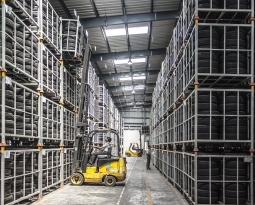Missouri Patent of the Month – April 2024
The field of surgical technology is continually evolving, with innovations like the ultrasonic surgical handpiece from Kogent Surgical, LLC leading the way. This newly patented invention incorporates a torsional transducer assembly, revolutionizing the precision and efficiency of surgical procedures.
At the heart of this invention lies the motor, meticulously engineered to accommodate the torsional transducer assembly. This assembly, aligned along the central axis of the handpiece, responds to electrical currents and voltages from a power source by generating a standing wave. This standing wave, characterized by an alternating pattern of nodes and anti-nodes along the central axis, sets the stage for precise torsional motion at the working plane of the surgical attachment.
What sets this handpiece apart is its ability to harness torsional motion for surgical precision. Unlike traditional longitudinal vibrations, torsional movement offers smoother and more controlled operation, minimizing damage to surrounding tissue and reducing thermal energy. By creating less thermal energy, this innovative handpiece mitigates the risk of thermal damage, setting a new standard for surgical tools.
The design of the surgical attachment further enhances the efficacy of this handpiece. With a proximal end detachably connected to the motor and a distal end defining a working plane, the surgical attachment ensures optimal engagement with biological tissue. By strategically positioning the junction of the attachment to correspond with the nodes or anti-nodes of the standing wave, the handpiece maximizes the amplitude of the standing wave at the working plane, enhancing its cutting and coagulation capabilities.
The versatility of this handpiece extends to its applications in dissection, aspiration, and cutting of biological tissues. The ultrasonic technology provides a safer vibrational pattern with reduced risk of tissue damage.
Are you developing new technology for an existing application? Did you know your development work could be eligible for the R&D Tax Credit and you can receive up to 14% back on your expenses? Even if your development isn’t successful your work may still qualify for R&D credits (i.e. you don’t need to have a patent to qualify). To find out more, please contact a Swanson Reed R&D Specialist today or check out our free online eligibility test.
Who We Are:
Swanson Reed is one of the U.S.’ largest Specialist R&D tax advisory firms. We manage all facets of the R&D tax credit program, from claim preparation and audit compliance to claim disputes.
Swanson Reed regularly hosts free webinars and provides free IRS CE and CPE credits for CPAs. For more information please visit us at www.swansonreed.com/webinars or contact your usual Swanson Reed representative.

















